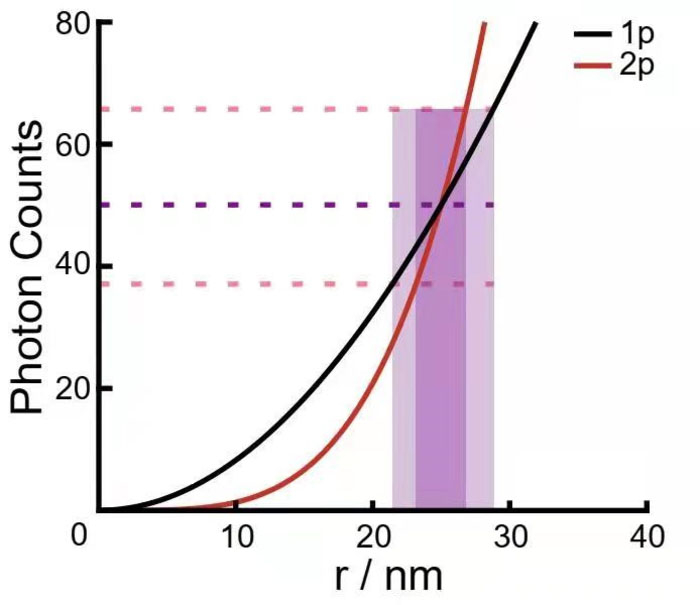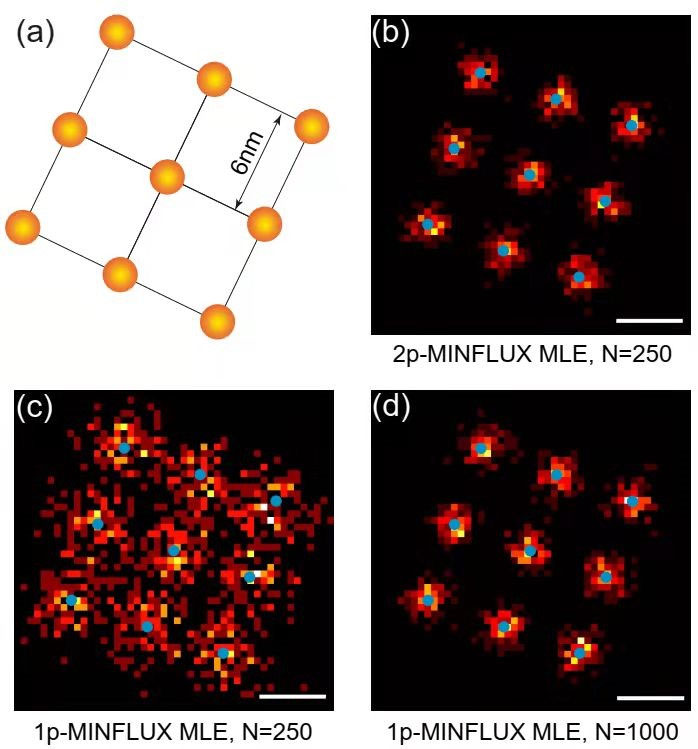| Mar 24, 2022 |
Optical nanoscopy to need fewer photons with nonlinear response
(Nanowerk News) While many researchers use optical nanoscopes for their research, they are currently limited in their resolution due to how light diffracts. While techniques have been developed to combat this, there are still improvements. One research team in Beijing believes that multi-photon microscopy is the answer.
|
|
In a new paper published in eLight ("Two-photon MINFLUX with doubled localization precision"), a team of scientists led by Professor Ping Xi from Peking University hypothesized an advancement of the existing MINFLUX technique. Their report pushes the already extended boundaries around fluorescence.
|
 |
| The width of the confidence interval for two-photon fluorescence localization is half the width for single-photon fluorescence, demonstrating improved localization precision. (Image: Kun Zhao,Xinzhu Xu, Wei Ren, Dayong Jin and Peng Xi)
|
|
Kun Zhao, the first author of the paper, said that "2p-MINFLUX provides a possibility for further pushing the boundaries of achievable resolution."
|
|
The team theorized that by doubling the gradient, they would increase the precision of optical nanoscopy by a factor of two or decrease the number of photons needed by a factor of four.
|
|
One of the team's most significant challenges was understanding the detail and intricacies of MINFLUX theory in vectorial optics. It was a demanding task, but based on their previous STED and nonlinear optics simulations, the team managed to carry out the whole simulation of 2p-MINFLUX.
|
 |
| Simulation of 2p-MINFLUX with DNA origami. (Image: Kun Zhao,Xinzhu Xu, Wei Ren, Dayong Jin and Peng Xi)
|
|
Kun added that MINFLUX uses the intensity valley for localization instead of a localization peak. The valley of donut excitation is sharper than its peak. That is how it becomes precise. Under two-photon excitation, the sharper valley acquired under 2p-MINFLUX requires fewer photons and increased precision.
|
|
The next goal for the research team is to prove their theory through experimentation. They also plan to assess first-order Laguerre-Gaussian beams and other optical vortices.
|


